

Ben Zachariah
CarExpert's top five ute reviews of 2025
19 Hours Ago
The Volkswagen Amarok Core is an entry-level workhorse that proves a base model ute doesn't need to look, feel, or drive like one.
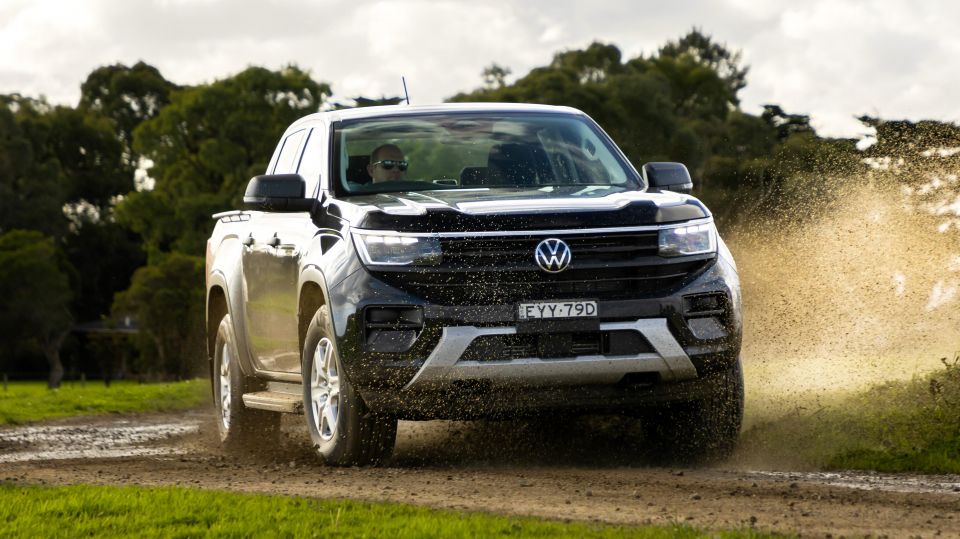
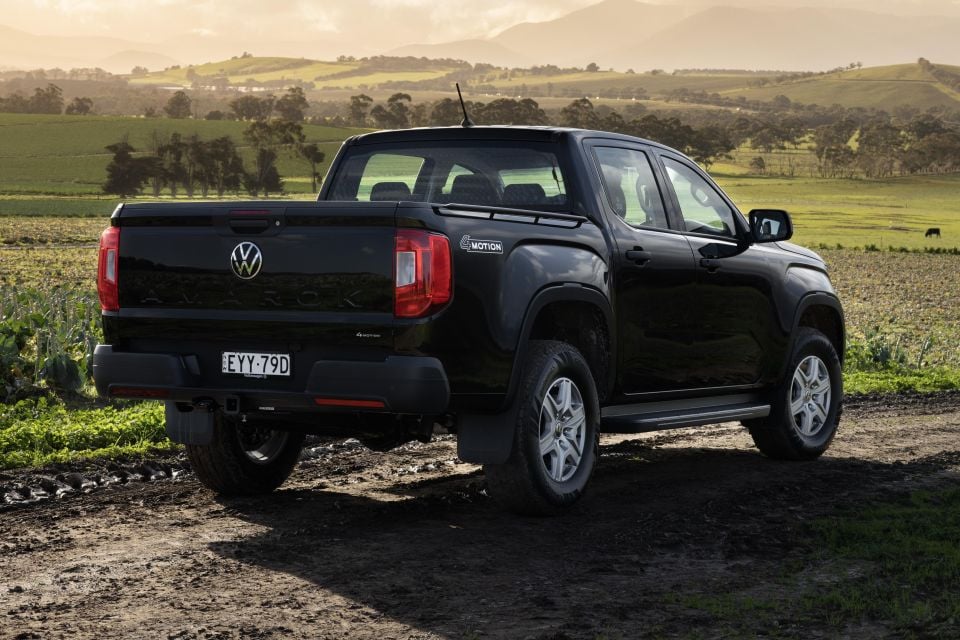

Quickly see how this car stacks up against its competition. Select any benchmark to see more details.
Where expert car reviews meet expert car buying – CarExpert gives you trusted advice, personalised service and real savings on your next new car.
The new South African-made Volkswagen Amarok dual-cab ute is a highly anticipated model for the company’s commercial vehicle division, with local deliveries starting last month.

While we’ve had the opportunity to drive a fair few upper-spec Amaroks now, but we’re yet to experience the lower end of the line-up on Australian soil. It’s worth noting the new-generation Amarok is based on the current Ford Ranger too.
The entry-level Volkswagen Amarok Core TDI405 that this review is focussed on is priced from $52,990 before on-roads.
It’s powered exclusively by the 2.0-litre single-turbo four-cylinder diesel, mated to a six-speed automatic transmission with drive sent through a part-time four-wheel drive system.
The Amarok Core can be distinguished externally from the rest of the line-up by its 17-inch alloy wheels, black side mirrors and door handles, as well as the tie-down rails on the tub.
Despite being a base model, the Amarok Core seems pretty well-equipped on paper, with automatic LED headlights, two front towing hooks, an 8.0-inch digital instrument cluster, a 10.1-inch touchscreen infotainment system, and a wireless phone charger all coming as standard.
The Amarok Core goes up against some stiff 4×4 dual-cab ute competitors including the related Ford Ranger XL, Toyota HiLux SR, Isuzu D-Max SX, and Mazda BT-50 XT, among others – how does it stack up?
There are a total of seven variants in the 2023 Volkswagen Amarok range, with the now automatic-only Core kicking off the range at $52,990 before on-road costs.

Clear White exterior paint is standard on the Amarok Core, with seven metallic exterior paint colours costing an additional $990.
Volkswagen has announced a range of factory-backed accessories for the Amarok, including canopies, roof racks, roller covers, suspension kits, and an electronic brake controller kit, among others.
Similarly priced dual-cab ute rivals include:
All prices are before on-road costs
Buy your new car without the stress. It's fast, simple and completely free.

Great service from Travis and team, second time I have used this business would not hesitate to recommend them to anyone
Craig C.
Purchased a Ford Ranger in Sunshine Coast, QLD
CarExpert helped Craig save thousands on his Ford Ranger, now let us save you on your next new car.
Find a dealWhen you walk up to the Volkswagen Amarok Core and go to hop inside, there are thankfully a set of side steps as standard that help make this a bit easier. It’s a fair climb into the ute so they’re necessary.
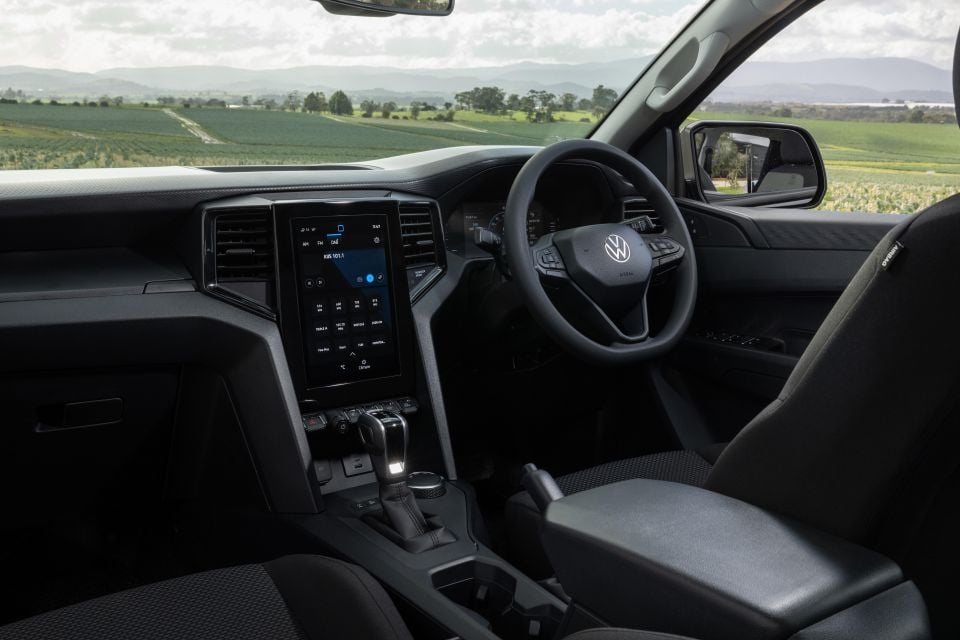
Taking a look around the cabin you’re able to pick out some similarities between the Amarok and the Ford Ranger, including the indicator stalks, gear selector, and infotainment chimes; though there are a number of tweaks Volkswagen has made to the Amarok to make it look different.
Unfortunately you miss out on the Ranger’s dashboard-mounted tradie cupholders in the Amarok, and the optional trailer brake controller isn’t beside the steering column and partially obscures the standard wireless phone charger.
Although the Amarok Core mightn’t look like a base model ute on the outside, it’s a little obvious you are in an entry-level ute on the inside as there are vinyl floors and a large wealth of hard plastics. Even the door and centre armrests are rock solid, but this is really to be expected in a workhorse vehicle.
The most annoying plastic in the Amarok Core is the dark dashboard plastic that has a carbon fibre-like pattern which reflects light on the windscreen if hit in the right direction. I resorted to putting a hat on the dashboard to be able to see properly…
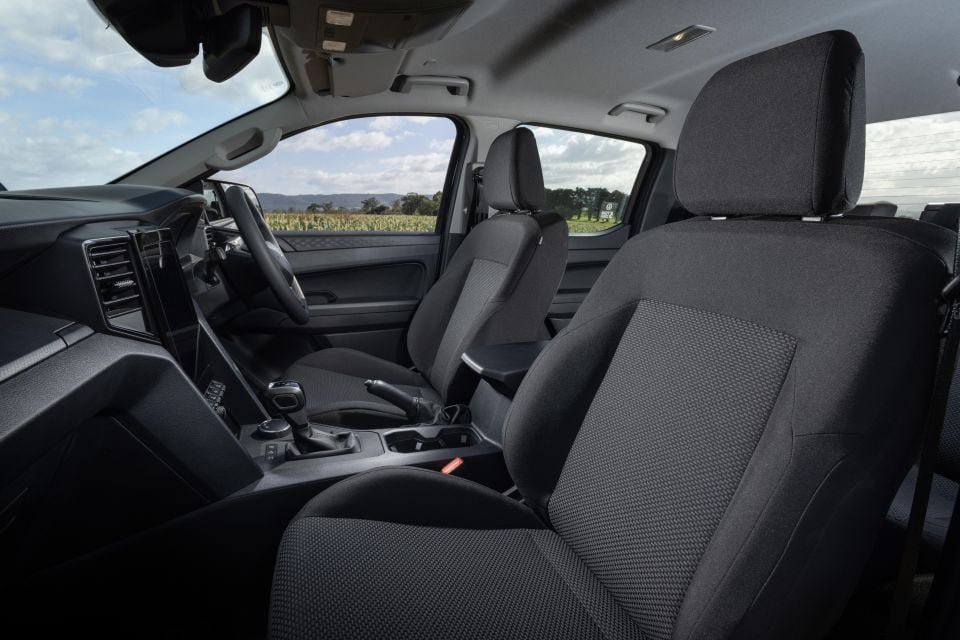
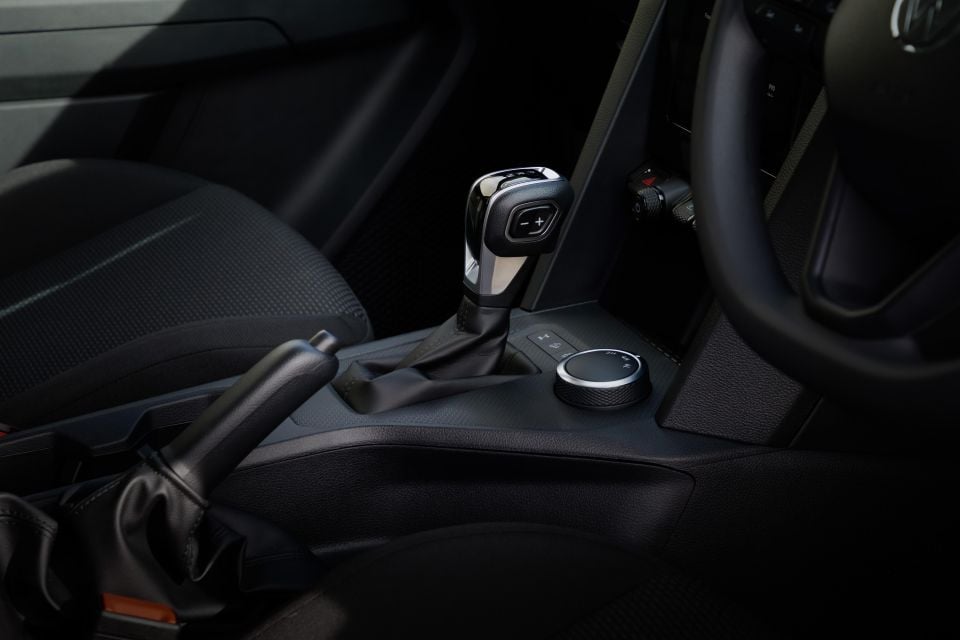
Despite the scratchy plastics, the Amarok Core has comfortable manual fabric seats that offer plenty of bolstering. I was able to get really comfortable on longer drives, though I was looking for some extra lumbar support after a few hours.
The urethane steering wheel is another telltale sign you’re in the base model, but in hand it doesn’t feel as cheap as you would think. It also has physical push buttons which I’m very thankful for.
Ahead of the driver is an 8.0-inch digital instrument cluster that’s quite familiar if you’ve been in the Ranger. It is reskinned though to make it look like Volkswagen’s Digital Cockpit.
While the digital instrument cluster does look clear and high-resolution, only the right-hand side of the cluster can be changed to display different content. For example you can’t have a tachometer and the fuel economy pages up at the same time which is a little frustrating.
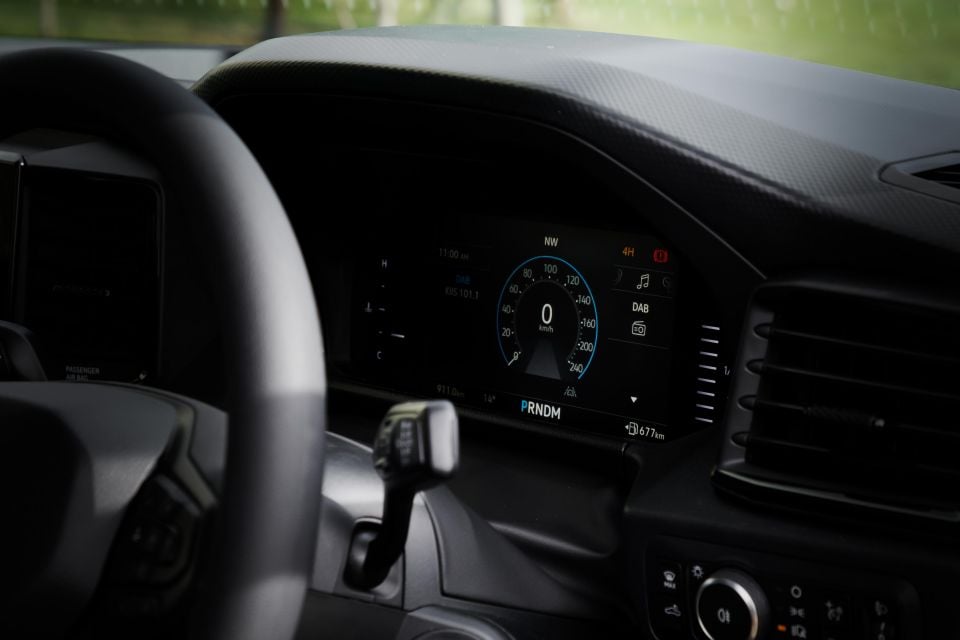
You do get used to how the digital instrument cluster is set up though, even if you have to toggle between a few pages occasionally in order to see what you want.
Moving across, the 10.1-inch portrait-oriented touchscreen infotainment system is also a clear reskin of Ford’s SYNC 4 infotainment system with Volkswagen design elements.
The unit has enough processing power, meaning it boots up quickly when you start the ute and new pages load quickly.
There really isn’t much to the infotainment system once you start digging around as there’s no satellite navigation, though thankfully there are wired and wireless Apple CarPlay and Android Auto.
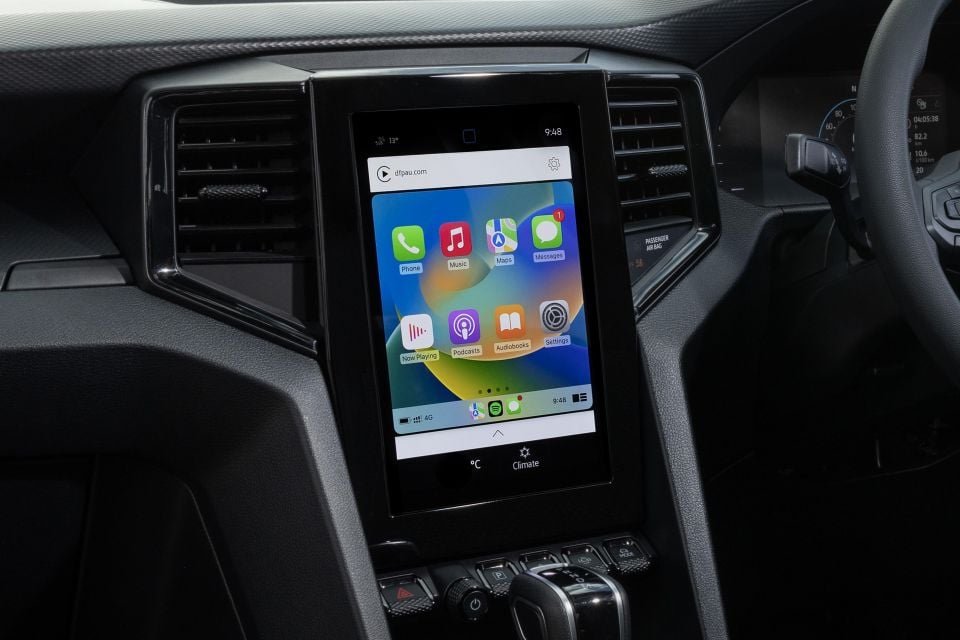
I didn’t have any issues initially connecting my iPhone 12 Pro Max with wireless Apple CarPlay in the Amarok, though there were a few graphical issues that almost made me plug my phone in to get a reliable connection. Disconnecting then reconnecting my phone fixed these problems every single time so I’m not certain if the issue was with my phone or the infotainment system.
There’s a standard wireless charger across the entire Amarok range that kept the phone topped up while using wireless Apple CarPlay, which typically decimates my battery. I’m surprised it actually worked because my phone usually hates wireless chargers.
Although the infotainment system is a little basic beyond smartphone mirroring, you will be using it quite often as the air-conditioning controls are altered using the touchscreen. You read the right, air-conditioning not climate control.
What makes this more frustrating is if you want to adjust the temperature you need to click the °C symbol down the bottom of the touchscreen and then use the slider to set your desired temperature. Then if you want to change the blower speed or where the air is pointing you have to go into a separate ‘Climate’ tab to adjust these.
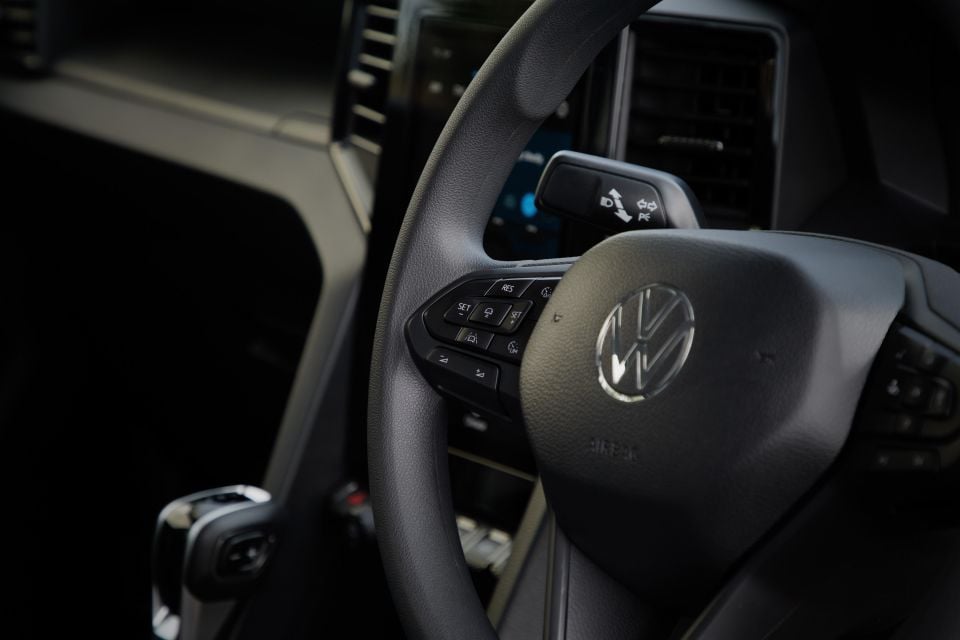
You can’t even see what the temperature/fan speed is set to without digging into these two menus.
It’d be really nice to have simple buttons and knobs for these air-conditioning controls because having them hidden behind menus on the touchscreen is just annoying. The related Ranger has still has physical knobs and buttons for these, along with some digital elements.
There are a row of piano key-like shortcut buttons underneath the touchscreen, along with a singular volume knob. The latter of these has a power icon on it that thankfully remains upright regardless if you spin the knob, unlike a number of other Volkswagen models.
This entry-level Amarok has the regular gear shifter, whereas the rest of the range has the sleeker shift-by-wire selector that’s called the e-Shifter in Ford-speak. I actually prefer the regular shifter in this Amarok because it aligns nicely with the centre console and you can properly tell what gear you’re shifting into.
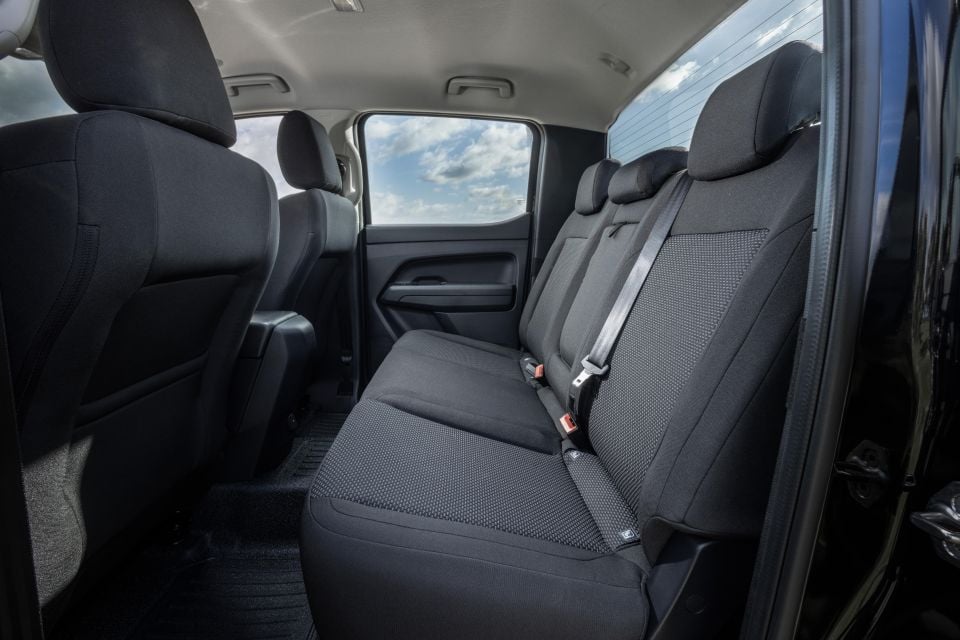
Around the gear shifter is a manual handbrake (the rest of the range gets an electric park brake), the four-wheel drive control dial, and two cupholders.
Moving to the second row there isn’t necessarily a step down in quality because the entire ute is pretty stripped out.
At a leggy 182cm I had to splay my legs around the front seat that was set to my driving position, though I wasn’t uncomfortable at all. There are also ISOFIX and top-tether points on the outboard rear seats.
In terms of backseat amenities you only have a centre fold-down armrest and a 12V plug. There are no air vents on the back of the centre console, nor rear USB ports.

The tub on the entry-level Amarok Core is still big enough for a Euro pallet to fit. It measures 1544mm long, 1224mm wide, and 529mm deep.
There are six tie-down points in the tub, as well as exterior tie-down rails that flank the tub. You know the Amarok is an entry-level Core variant if they have the latter of these features.
It’s worth noting the tailgate on the Amarok Core is manually locked and not a part of the central locking. You need to step up to the Life in order to get it to lock automatically.
Standard across the entire Amarok range is a tow bar that’s rated for up to 3500kg with braked trailer, and a 12-pin trailer plug. A trailer brake controller is optional.
The Amarok Core is powered exclusively by a 2.0-litre single-turbo four-cylinder diesel engine called the TDI405 that produces 125kW of power and 405Nm of torque.
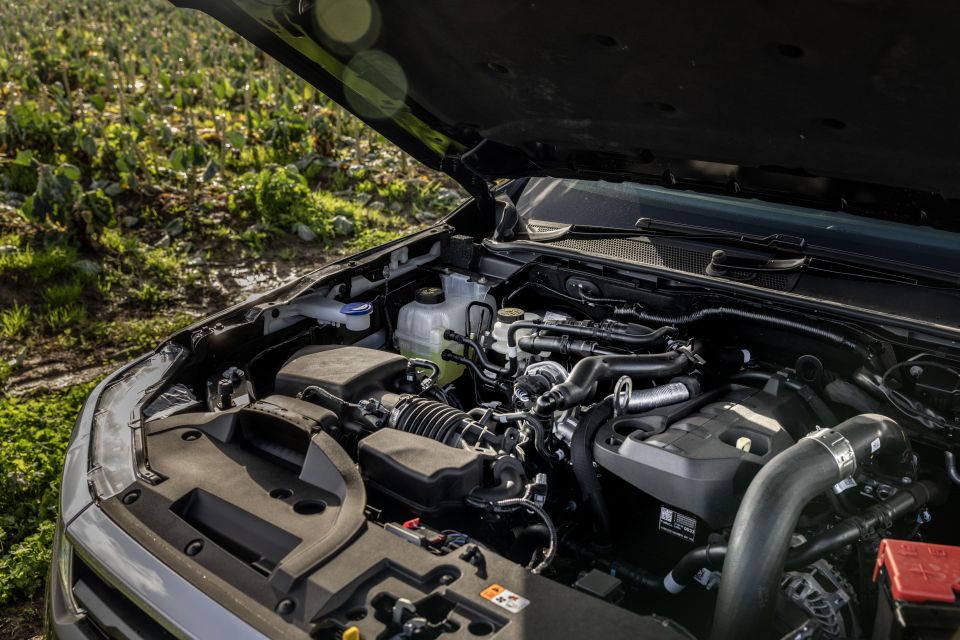
This is now exclusively mated to a six-speed automatic transmission with drive sent through a part-time four-wheel drive system with 2H, 4H and 4L modes. There’s also a locking rear differential.
The following drive modes are available:
The Amarok Core is only variant that’s available with the 2.0-litre single-turbo four-cylinder diesel engine. Depending on the variant, the rest of the line-up comes with a 2.0-litre bi-turbo four-cylinder diesel, a 3.0-litre turbo-diesel V6, or a 2.3-litre turbocharged four-cylinder petrol engine.
Claimed combined fuel economy for the Amarok Core is 8.0 litres per 100km. On our media launch drive that consisted of around 250km of highway, regional and off-road driving we saw an average of 9.3 litres per 100km.
The Amarok Core doesn’t have engine idle stop-start like other engine variants, while the entire line-up has an 80-litre fuel tank.
Volkswagen claims a 3500kg braked towing capacity across the entire Amarok line-up, while unbraked towing is capped at 750kg. Payload for the Amarok Core is 1042kg.
Starting up the Amarok Core you’ll need to put the key in the ignition and physically turn the key – that’s a bit of a throwback! Once the engine turns on you’ll hear a familiar diesel grumble that’s quite agricultural.
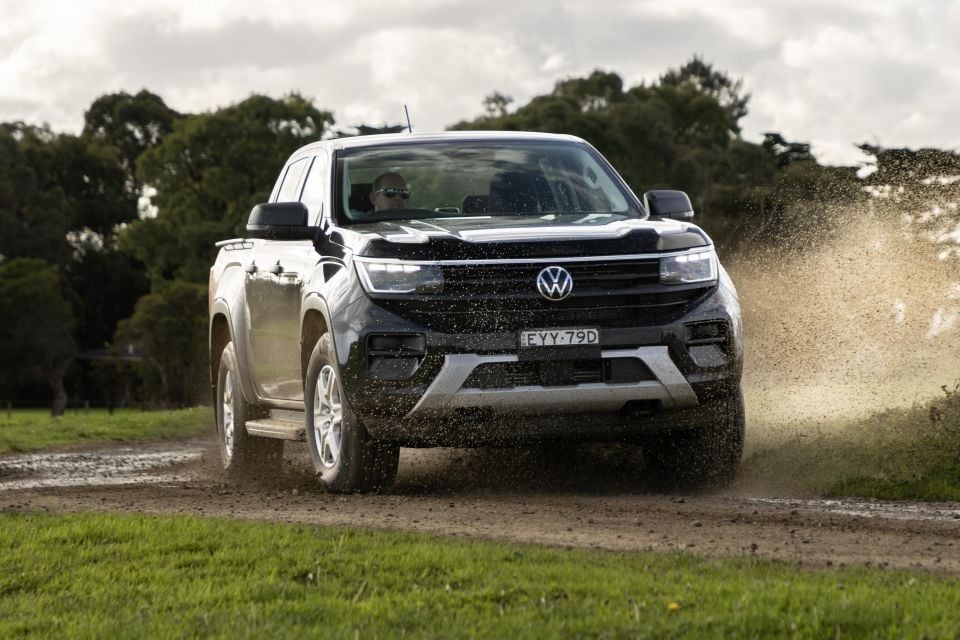
I’m going to be frank and say this was my first time experiencing the 125kW/405N 2.0-litre single-turbo diesel that’s also in base versions of the Ranger. I’ve driven plenty of Bi-Turbo and V6 Rangers so I was very keen to see how it stacked up.
Takeoff in the Amarok Core is completely adequate. You’ll be keeping up with traffic with no problems at all, though you’ll notice you have to work it just that bit harder than bi-turbo TDI500 models to get to speed.
At cruising speeds the single-turbo engine in the Amarok Core is virtually indistinguishable to higher-spec models with the bi-turbo engine. It even sounds very similar.
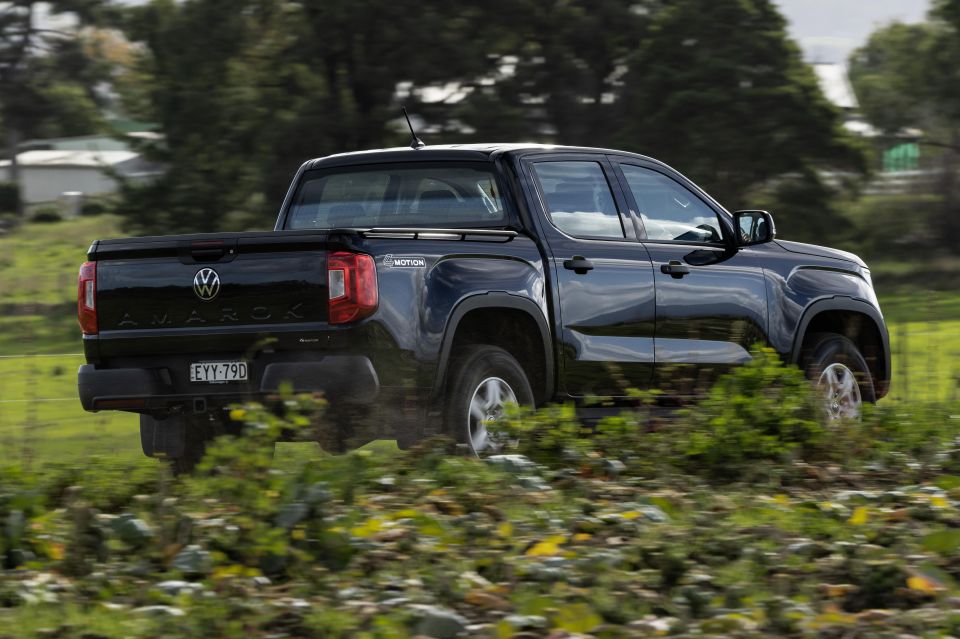
If you push the ute you’ll find its limits pretty quickly. The single-turbo engine is mated to a six-speed automatic transmission instead of a ten-speed automatic transmission like the rest of the range, so it revs out a bit more and doesn’t stay firmly in the torque band.
The steering in the Amarok Core strikes a good balance of being light while still having enough feel. It definitely feels like a Volkswagen.
Compared to the Ranger, the Amarok’s suspension setup is noticeably firmer though it’s never uncomfortable. It’s definitely more an SUV-like driving experience than any ute I’ve driven before.
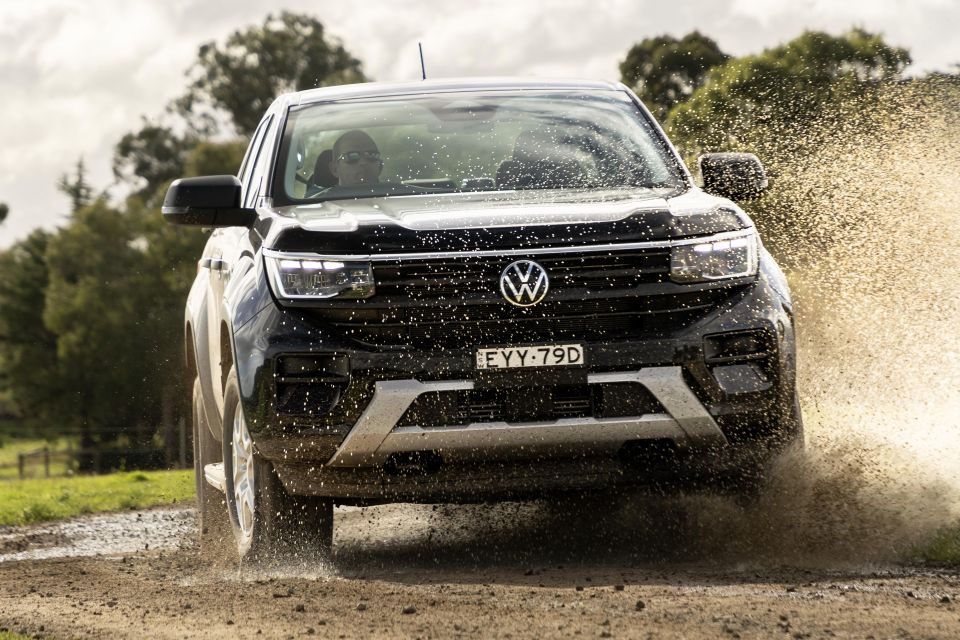
Where expert car reviews meet expert car buying – CarExpert gives you trusted advice, personalised service and real savings on your next new car.
There isn’t too much body roll though you can tell you’re driving a heavy vehicle with a high centre of gravity.
When the ute is unladen it feels quite compliant over bumps and imperfections. The tub doesn’t bounce around too much either.
It’s likely the reason the Amarok Core feels so comfortable and compliant is due to the smaller 17-inch alloy wheels that are wrapped in chunky highway-terrain tyres with plenty of sidewall.
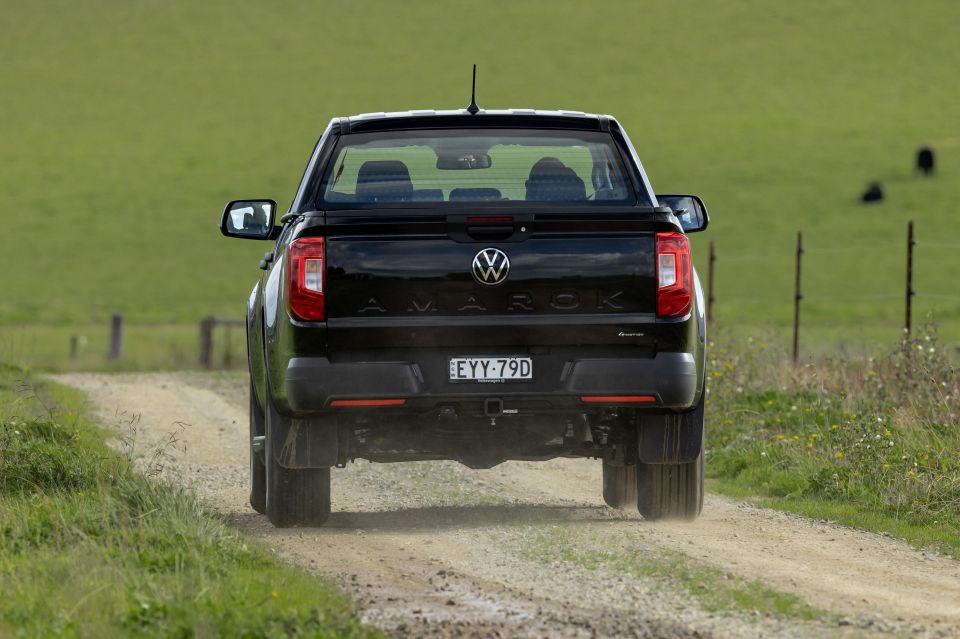
At the media launch for the Amarok Core and Life I got the opportunity to drive the entry-level Amarok Core with 900kg in the tub. This is 142kg away from its maximum payload.
The ute handled the weight in the tub like a champ, and from the outside it didn’t appear to have too much sag at all.
At low speeds you couldn’t really tell you had almost a tonne in the tub, though when the speed picked up it was more noticeable.
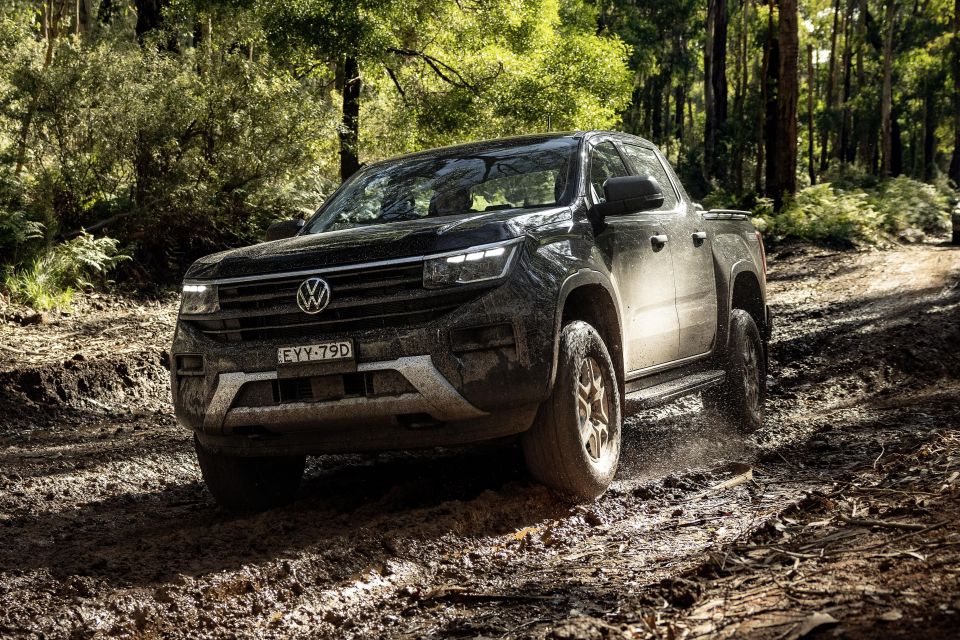
When I went around a corner at speed there was a lot more roll and it felt like the tub was leading the vehicle at points.
During this time I had the Amarok in its Tow/Haul driving mode which downshifted gears earlier when I braked and held a lower gear when accelerating. It felt quite reassuring and never felt like the ute was running away from me.
It’s worth noting the Amarok Core only comes with rear drum brakes, whereas the rest of the range gets disc brakes all around.
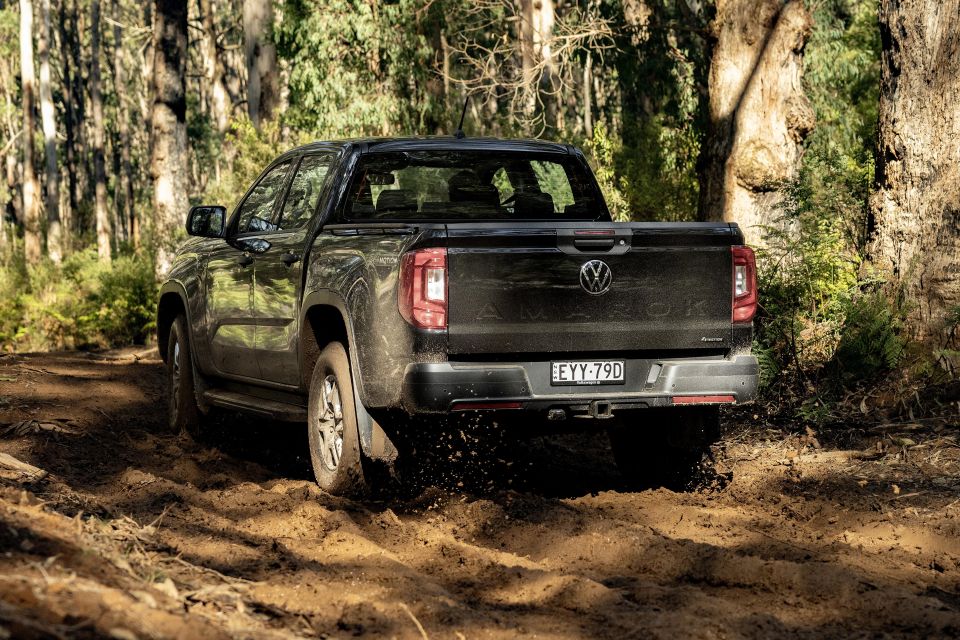
The rear drum brakes make the ute have a distinctly spongy brake pedal feel that you don’t get in the rest of the Amarok line-up. It’s not really confidence inspiring, though you quickly get used to it.
In terms of off-road equipment, the Amarok Core is fairly well featured. It has a part-time four-wheel drive system which can’t be run in 4H on sealed surfaces.
It would be nice to have a full-time four-wheel drive system that gives you that peace of mind on slippery bitumen roads, though you need to step all the way up to the V6-equipped Amarok Style to get that.
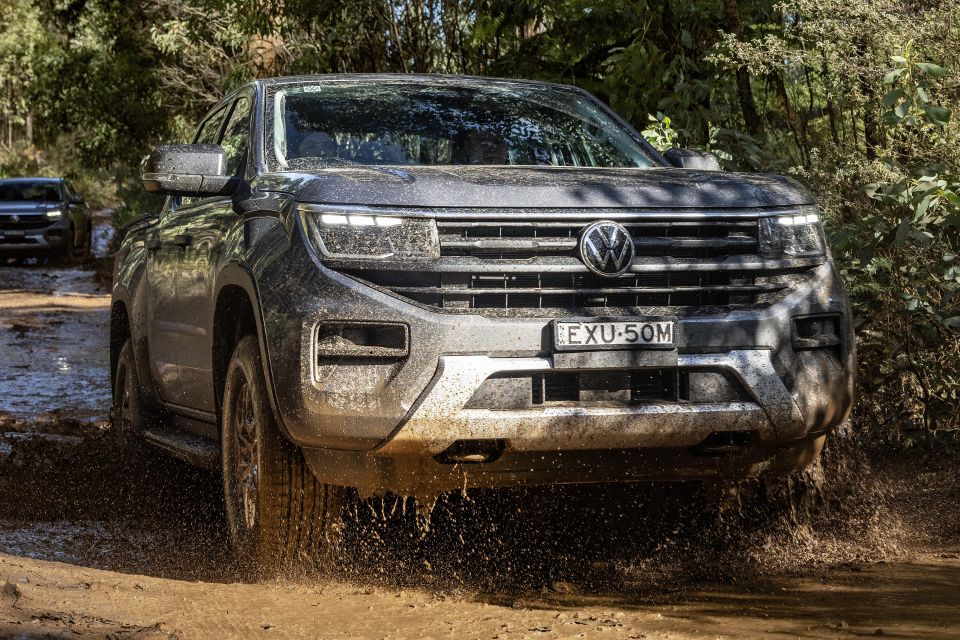
During the off-road portion of our launch drive on some particularly greasy tracks in the Toolangi State Forest, the Amarok Core never felt out of its depth at all.
There is locking rear differential as standard, which can be activated by pressing a button near the gear selector, though we never needed its assistance.
On the safety front, the Amarok Core has a fair deal of standard equipment – though notable omissions include blind-spot monitoring and rear cross-traffic alert that are standard across the rest of the range.
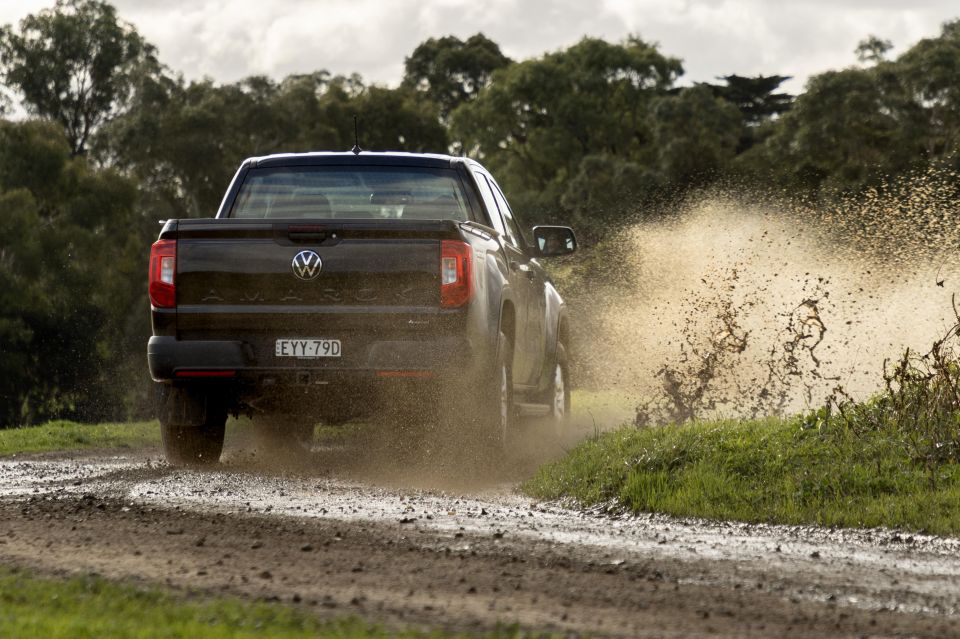
There were a couple of points where the autonomous emergency braking (AEB) system activated during off-roading, which isn’t ideal given the need for momentum.
It is better to have this safety equipment though just in case you’re not paying absolute attention.
The Amarok Core also comes with adaptive cruise but without the stop-and-go functionality. It operates quite naturally and doesn’t freak out when I car cuts in front of you on the freeway.


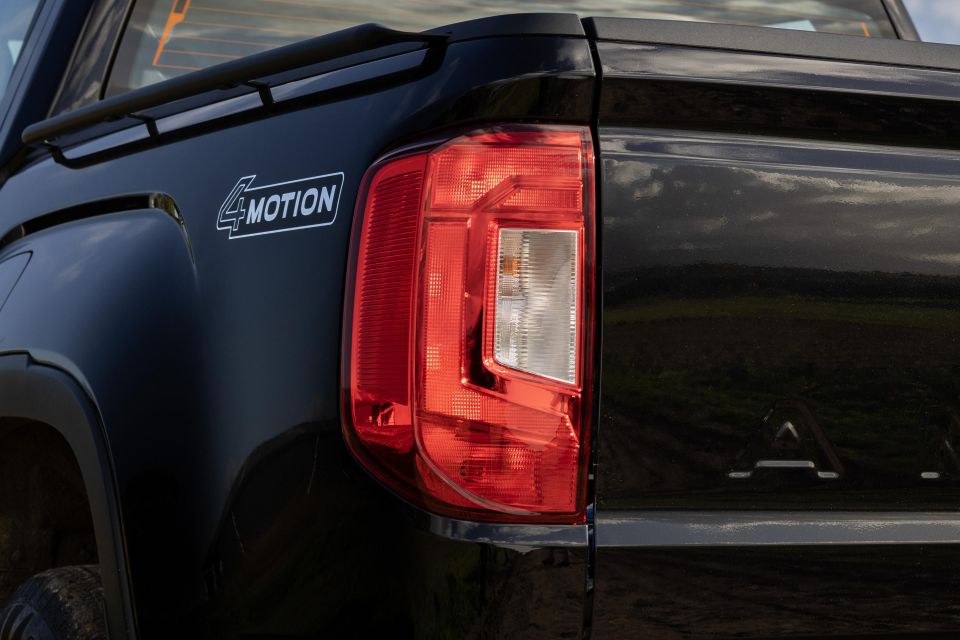

Amarok Core highlights:
Exterior


Interior
The Volkswagen Amarok was awarded a five-star ANCAP safety rating against the 2020-2022 testing protocols.
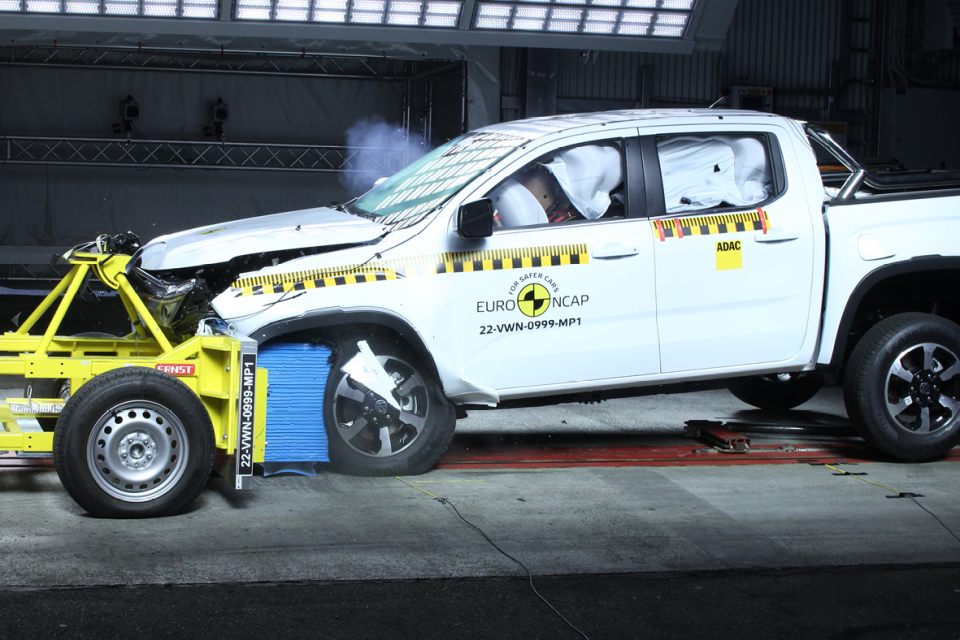
This result was drawn from testing of the closely related Ford Ranger, with additional frontal offset and side impact tests conducted on the Amarok by Euro NCAP, which has harmonised testing protocols with ANCAP.
The Amarok scored 86 per cent for adult occupant protection, 93 per cent for child occupant protection, 74 per cent for vulnerable road user protection, and 83 per cent for safety assist.
Standard safety equipment includes:
Amarok Life adds:
Amarok Style adds:
The Amarok is covered by a five-year, unlimited-kilometre warranty, like the rest of the Volkswagen range.
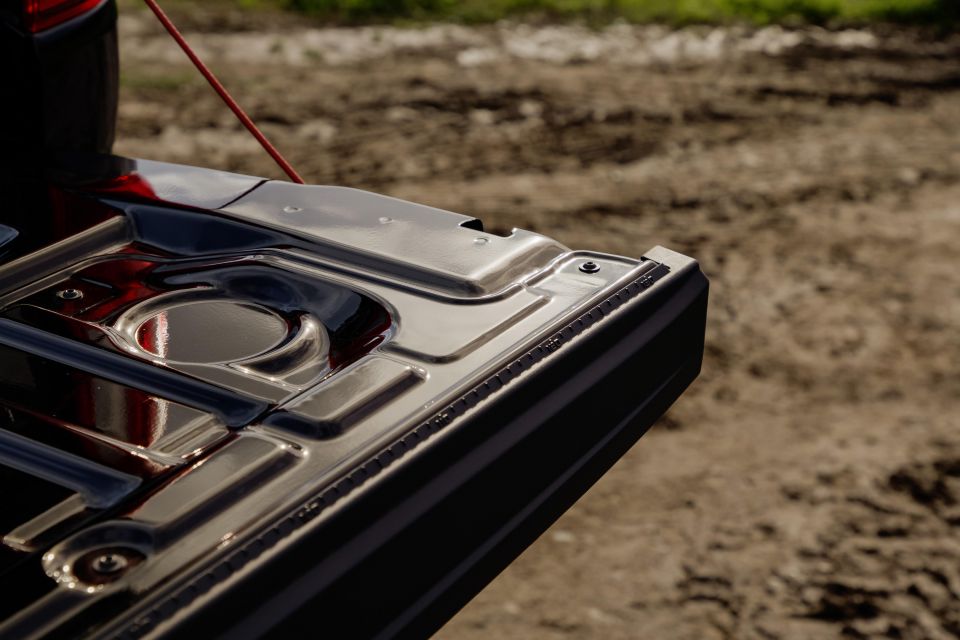
Logbook servicing is required every 12 months or 15,000km, whichever comes first.
The first five services are priced at $329, $329, $414, $329, and $400, respectively – totalling $1801. Volkswagen Australia also offers a five-year Care Plan which costs $1800.
For context, this five-year service pricing is similar to the Ford Ranger ($1701), though it’s considerably more affordable than the Mazda BT-50 ($2444), Isuzu D-Max ($2435), and Toyota HiLux ($3338) which has shorter six-month or 10,000km service intervals and only three years of capped price servicing.
The new-generation Volkswagen Amarok borrows some of the best bits from the segment-leading Ford Ranger and makes it distinctly Volkswagen.
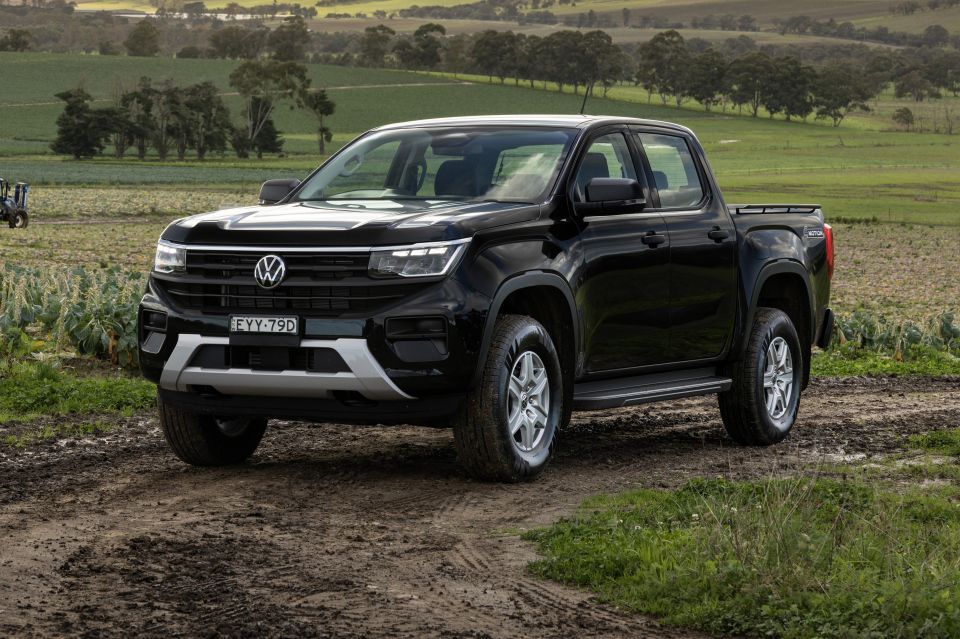
The German carmaker has done a great job making the Amarok look and feel more modern inside and out, plus its SUV-like driving dynamics are unlike any workhorse ute I’ve experienced to date.
At $52,990 before on-roads, the entry-level Amarok Core seems like a lot of money on paper, though when you crunch the numbers it’s actually quite similar to other mid-spec 4×4 dual-cab utes.
If you’re after the most affordable Amarok possible you really can’t go past the Core. You’ll get alloy wheels, a tow bar, a number of tie-down points and a tech-heavy interior standard.

Something to keep in mind though is the Amarok Core only comes with the less-powerful 2.0-litre single-turbo diesel and a part-time four-wheel drive system.
If you want the bi-turbo engine you have step up to the Life TDI500 ($56,990), or if you want the full-time four-wheel drive system with a 4A mode you need to go all the way up to the Style TDI600 ($70,990).
You also miss out on blind-spot monitoring and rear cross-traffic alert on the base Amarok Core, so if you’re safety conscious you might want to consider a higher trim level.
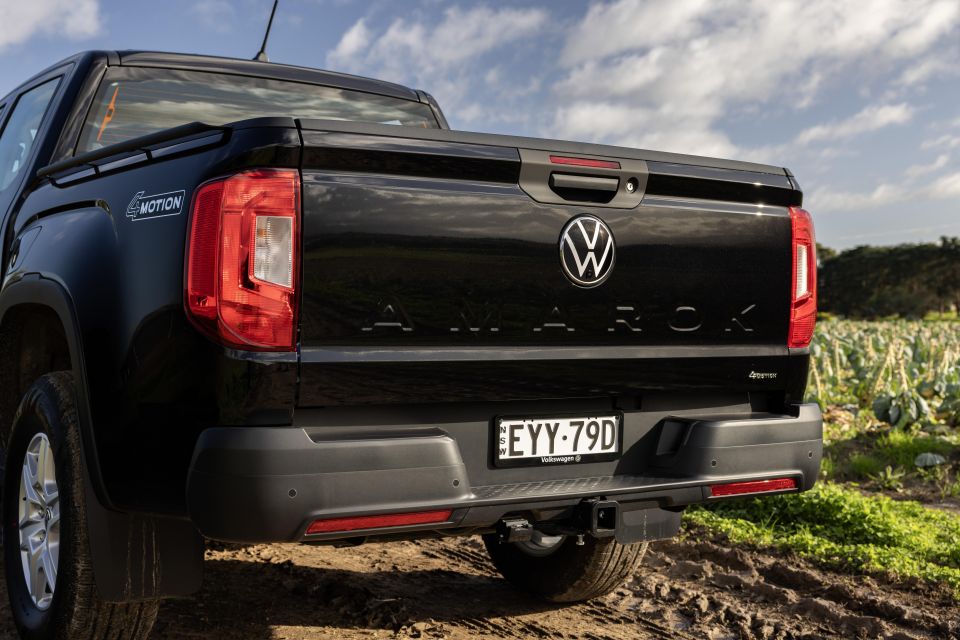
Click the images for the full gallery
Where expert car reviews meet expert car buying – CarExpert gives you trusted advice, personalised service and real savings on your next new car.
Jack Quick is an automotive journalist based in Melbourne. Jack studied journalism and photography at Deakin University in Burwood, and previously represented the university in dance nationally. In his spare time, he loves to pump Charli XCX and play a bit of Grand Theft Auto. He’s also the proud owner of a blue, manual 2020 Suzuki Jimny.


Ben Zachariah
19 Hours Ago


Matt Campbell
1 Day Ago


Derek Fung
5 Days Ago


Damion Smy
8 Days Ago


Ben Zachariah
10 Days Ago


James Wong
16 Days Ago